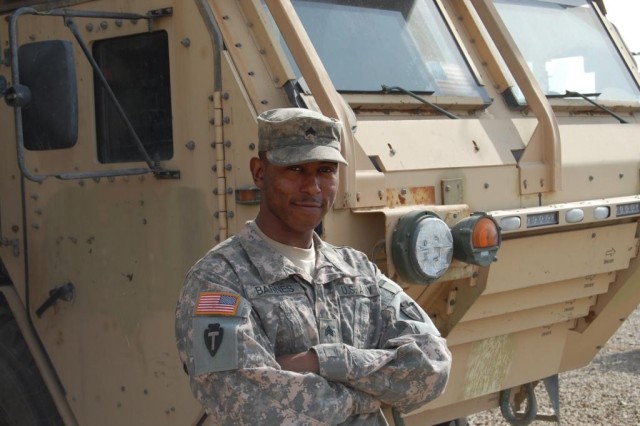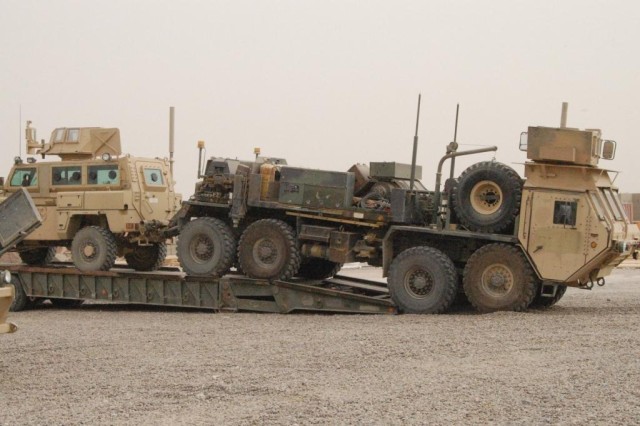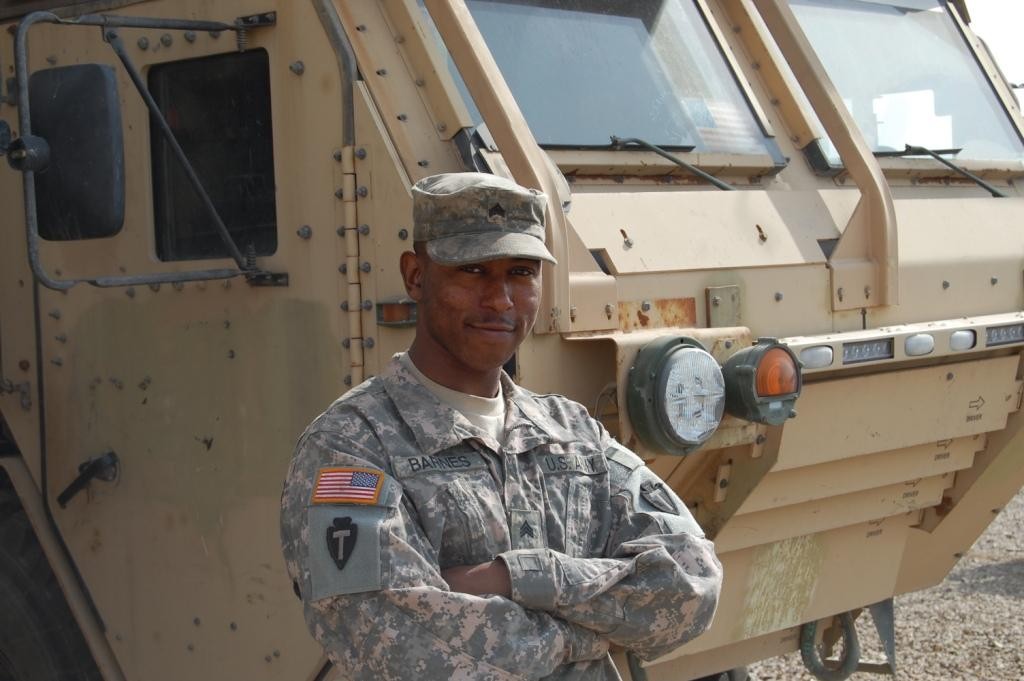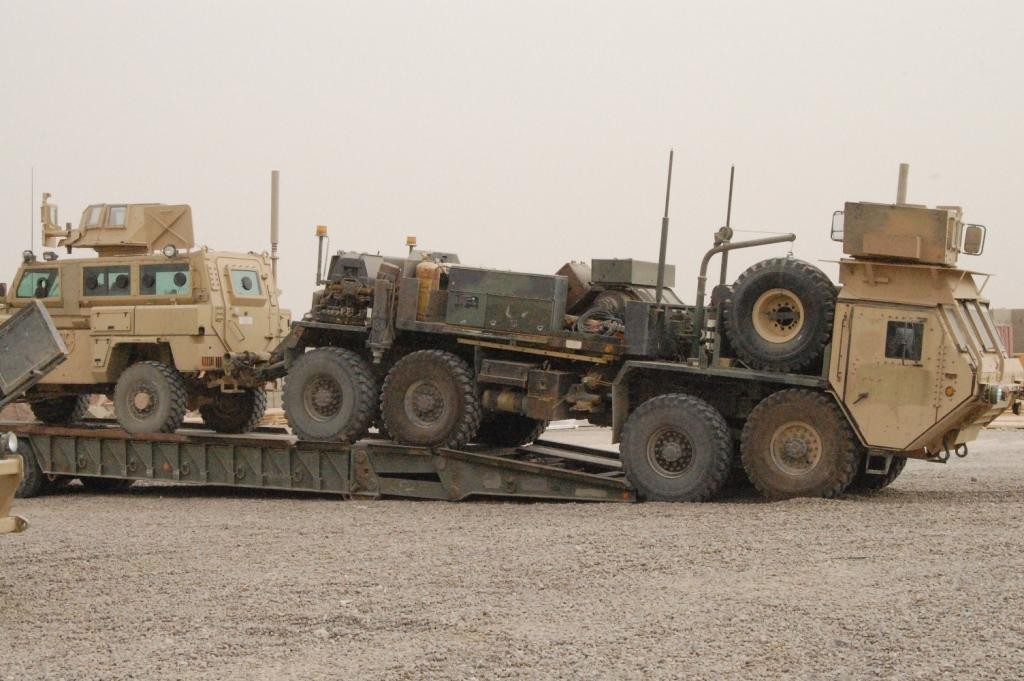BAGHDAD, Iraq -Most people, at some time or another, are familiar with the feeling of desperation that comes with being left on the side of the road and the seeming eternity before help arrives. Back in the states, you could call AAA or a wrecker service. So, what do you do in a hostile environment'
For the Soldiers of the 890th Engineer Battalion, this is when the battalion's recovery operation team kicks into high gear.
The recovery team consists of Soldiers assigned to the Maintenance Recovery Section and the Recovery Security Detachment. These Soldiers come from units across the 890th Eng. Bn. and are the battalion's roadside assistance
Recovery troops need to consider varying situations, other than making the roads safe for travel, before a route clearance mission can take place. When traveling "outside the wire" and something goes wrong, self-recovery is not always feasible or efficient. Every mission has a support structure that provides maintenance recovery for each patrol.
The process for a normal mission to assemble takes hours. However, the recovery team must assemble their gear, stage their vehicles, receive the mission brief and deploy within 15 minutes to the disabled vehicle's site to secure the equipment and the occupants.
So what happens when the recovery team reaches you' How do these separate elements work together'
When the team initially reaches the site, it is the job of the RSD to secure the perimeter so that the mechanics and vehicle's occupants can safely move about in the contained area. After security is established, the mechanics evaluate the disabled or damaged vehicle and determine if they can repair it on site. If recovery is the call, they determine the best removal process. Since no two recoveries are the same, mechanics are experts on all the battalion's vehicles in order to perform the removal process safely and quickly.
"My team conducts themselves as professionals. We rehearse different types of recoveries and after missions my team conducts after action reviews to see what worked, what did not or what we can do to improve. We do this so that we can pass that information to the unit that will be replacing us," stated Sgt. Jonathan Barnes, an 890th Eng. Bn. MRS team leader and a native of Chicago, Ill.
Once the team loads the disabled vehicle and places its original occupants in alternate transportation, the RSD removes the perimeter security and the team is ready to head to back to the forward operating base with the equipment in tow.
"I always tell my guys to be like Gumby-be flexible," said Staff Sgt. Alonso Yepez, a native of Somerton, Ariz. "You always have to be ready to recover a vehicle whenever it goes down. Not only do we have to get out there and recover the vehicles quickly and proficiently, but we also have to stay alert because anything could happen."




Social Sharing